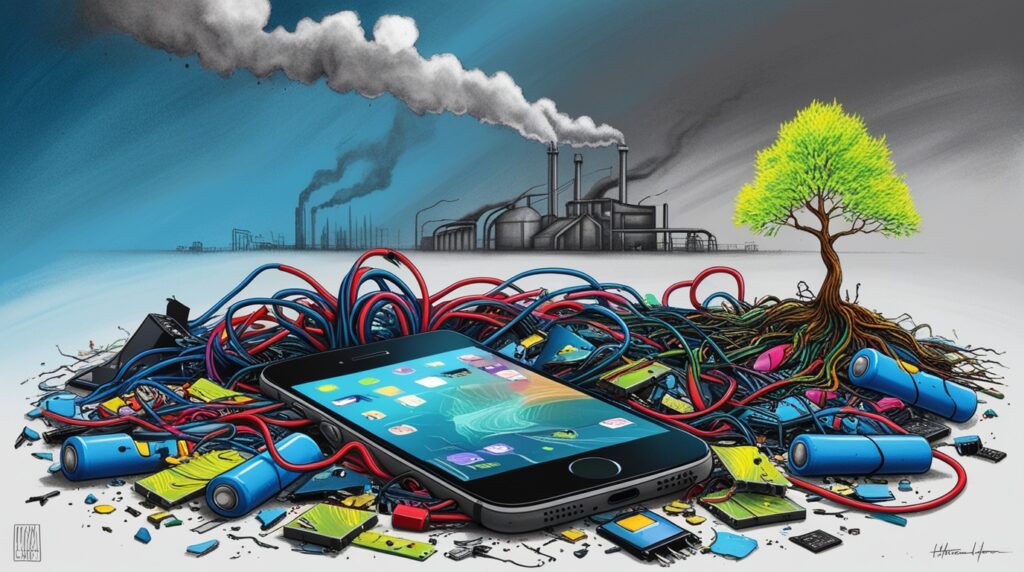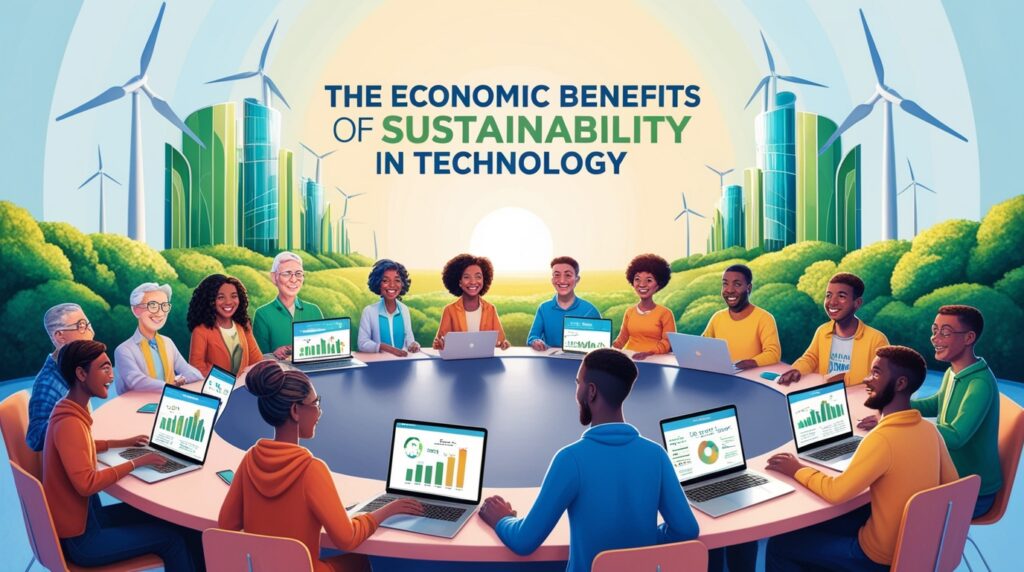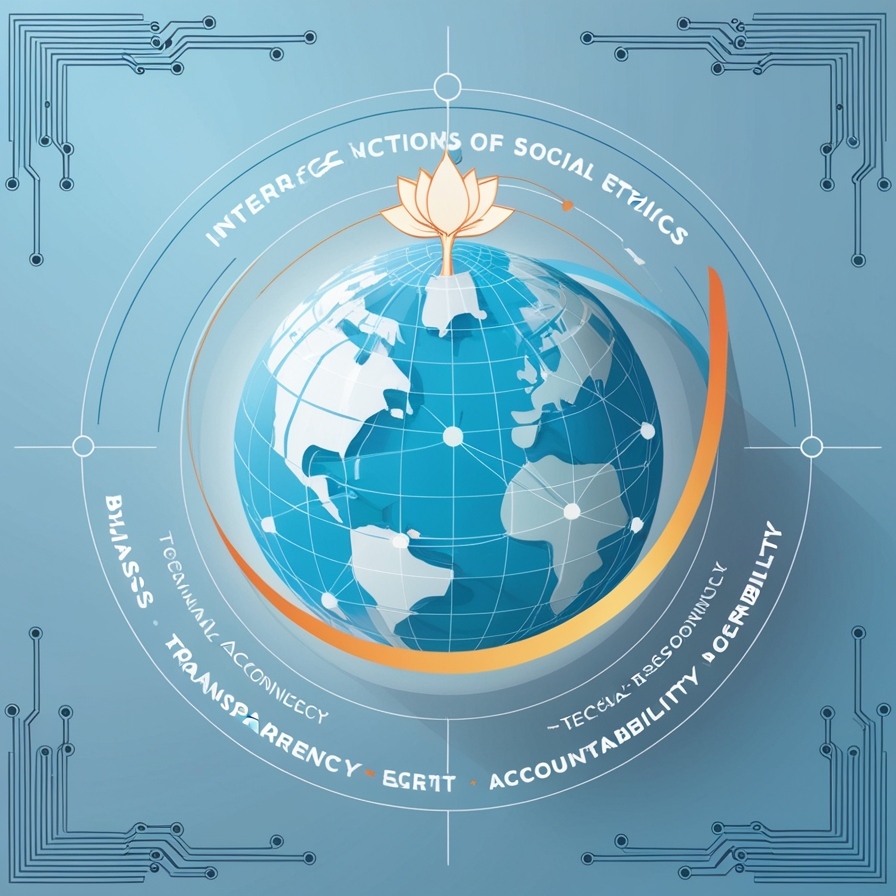In today’s rapidly evolving world, the technology sector stands at the forefront of global innovation and development. However, alongside its numerous benefits, this growth brings significant challenges, particularly concerning sustainability. Ensuring sustainability in technology is no longer an option; it is a necessity for ethical, economic, and environmental reasons.
What is Sustainability in Technology?
Sustainability in technology refers to creating and utilizing technology that meets the needs of the present without compromising the ability of future generations to meet their own needs. This encompasses environmental preservation, ethical use of resources, and fostering innovation that reduces negative societal impacts.
Tech companies are now redefining their business models to incorporate sustainable practices, ranging from energy-efficient production processes to the ethical sourcing of materials. The global community also demands transparent practices, holding corporations accountable for their environmental and social responsibilities.
The Environmental Impact of Technology

The environmental footprint of the tech industry is profound, with data centers, manufacturing facilities, and e-waste being significant contributors. Let’s delve into these aspects:
1. E-Waste: A Growing Concern
Every year, the world generates millions of tons of electronic waste (e-waste). Smartphones, laptops, and other electronic devices have short lifecycles, leading to disposal issues:
- Only 20% of e-waste is properly recycled globally.
- Toxic substances, such as mercury and lead, leach into the soil and water systems when improperly disposed of.
- Rare earth metals required for tech manufacturing are finite, further exacerbating the issue of overexploitation.
2. Energy Consumption of Data Centers
The advent of cloud computing and massive data storage needs has led to the proliferation of energy-intensive data centers. According to studies, data centers account for approximately 1% of global energy use:
- Many data centers rely heavily on fossil fuels for energy.
- The heat generated from these facilities can disrupt local ecosystems.
- Energy-efficient technologies such as AI-powered cooling and renewable energy adoption are becoming vital solutions.
3. Manufacturing’s Environmental Cost
Tech manufacturing processes demand enormous resources:
- Mining for essential components like lithium, cobalt, and nickel has adverse ecological and human costs.
- Energy-intensive production exacerbates the industry’s carbon footprint.
- Companies face increasing pressure to adopt circular production models that prioritize reuse and recycling.
The Economic Benefits of Sustainability in Technology

Sustainability is not only about reducing environmental harm; it also contributes to economic growth. Embracing sustainable practices in technology can yield numerous benefits:
- Cost Savings: Transitioning to renewable energy sources and improving efficiency reduce operational costs.
- Market Demand: Consumers are increasingly prioritizing eco-friendly products, enhancing market competitiveness for sustainable tech companies.
- Innovation Opportunities: The shift towards sustainability fosters creativity and encourages the development of new technologies.
Social Responsibility and Ethics in Technology
Technological advancements influence societies worldwide. By integrating sustainability, tech companies align their practices with societal values:
1. Ethical Sourcing
- Ensuring that raw materials are obtained from sources that respect human rights and the environment.
- Reducing dependency on conflict minerals, which are often associated with human rights abuses.
2. Equity in Access
- Bridging the digital divide to provide equal access to technological advancements.
- Promoting diversity and inclusion within the tech workforce ensures that innovations benefit broader demographics.
3. Circular Economy
The concept of a circular economy in tech emphasizes recycling and refurbishing over disposability, ensuring a closed-loop system for resource usage. For example:
- Old devices are repurposed into raw materials for new gadgets.
- Companies like Apple and Dell are pioneering programs for product take-back and refurbishment.

Examples of Sustainable Technology Practices
1. Renewable Energy Transition
Tech giants such as Google and Microsoft lead by example, utilizing 100% renewable energy to power their data centers. These initiatives significantly lower their carbon footprint and set industry benchmarks.
2. Carbon Neutral Goals
Amazon’s Climate Pledge aims to achieve carbon neutrality by 2040. Through sustainable transport solutions like electric delivery vehicles, Amazon demonstrates commitment to greener practices.
3. Smart Solutions
- AI for Climate Action: Artificial intelligence aids in monitoring deforestation and optimizing energy use.
- IoT in Energy Management: Internet of Things (IoT) devices ensure energy efficiency in buildings and industrial settings.
Challenges in Implementing Sustainability

Despite its benefits, implementing sustainability in technology faces challenges:
- High Initial Investment: Adopting sustainable technologies requires significant upfront costs.
- Global Coordination: Addressing sustainability requires collaborative global efforts, which can be hindered by differing regulations and priorities.
- Technological Gaps: Developing nations often lack the infrastructure to integrate sustainable practices effectively.
Future of Sustainability in Technology
The journey towards a sustainable tech ecosystem involves continual innovation and proactive measures:
- Circular Supply Chains: Integrating reuse and recycling from the beginning.
- Policy Advocacy: Governments and corporations collaborate on policies to promote green technology.
- Research and Development: Increased funding for developing sustainable alternatives, such as biodegradable materials and low-energy chip designs.
Conclusion
Sustainability in technology is not a fleeting trend; it is the cornerstone of responsible innovation. By addressing environmental, economic, and social impacts, the technology sector can pave the way for a greener and more equitable future. Both corporations and individuals hold the power to drive this transformation, ensuring that technological progress aligns with the preservation of our planet.





